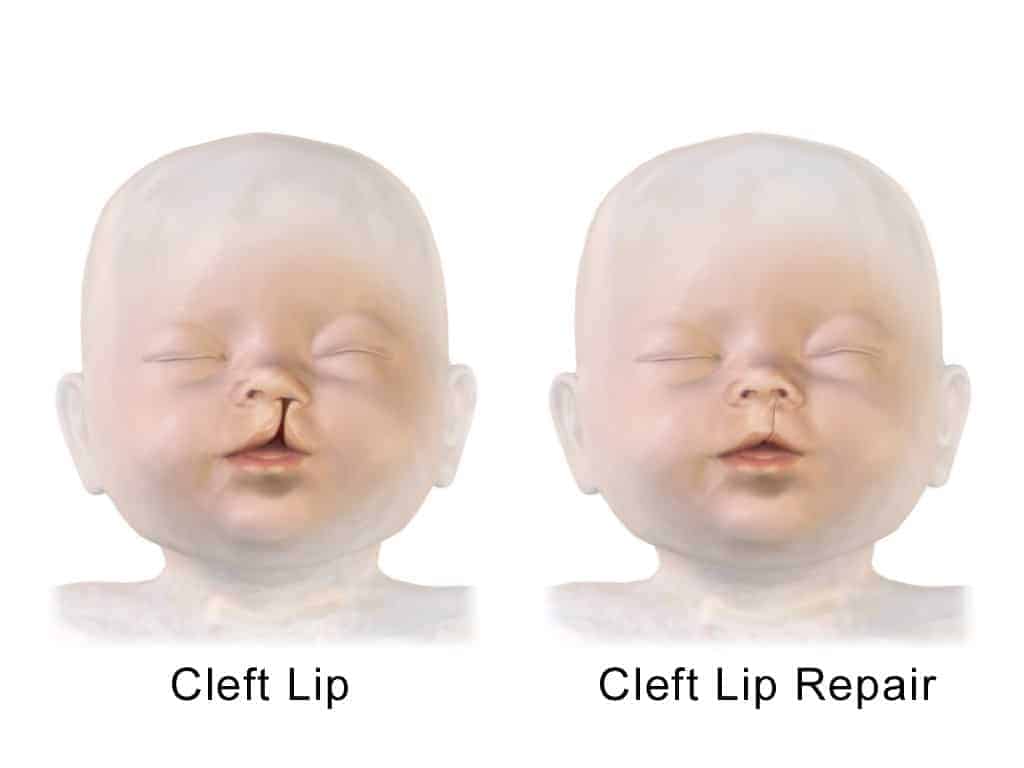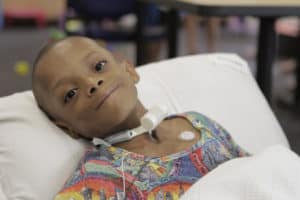Listen to the blog post
Cleft means gap or fissure. Cleft lip or cleft palate is one of the most common congenital craniofacial (head and face) birth defects. Craniofacial deformity means the baby born with a problem in its skull and face.
There is a gap developed in the roof of the mouth or on the upper lip. During fetal life, the bones of the skull do not correctly fuse together, as a result, cleft lip or palate develops. The cleft may extend to the maxillary alveolar ridge. It is the edge where the upper jaw meets with teeth. Cleft palate happens when the roof of the mouth fails to close properly during fetal life. There are two parts of the palate, one is the soft palate and another one is the hard palate. The bony portion is known as the hard palate and the portion remaining in the back of the mouth consisting of soft tissue is known as soft palate.
If cleft lip and palate can be seen from the outside. It can have a long impact on behavioral, and social life. Furthermore, it may lead to medical difficulties in the long run. A cleft can be a part of a larger genetic syndrome such as Van der Woude syndrome or Velocardiofacial syndrome, or it can be an isolated birth defect.
Epidemiology of cleft lip and palate
- In the United States around one thousand babies are affected with cleft lip and palate in a year. It is ranked as the fourth most common birth defect in the United States.
- In the United Kingdom, one thousand and two hundred babies are born with cleft lip or palate annually.
- The babies born in Asia develop cleft palate or lip more commonly than the other continents.
- Around the world, one in seven hundred babies are born with this anomaly.
- Among them, thirty-one percent have both cleft lip and palate. Twenty-four percent have only a cleft lip on them. Forty-five percent will have a cleft palate on its own. Around nine percent of babies have bilateral cleft lip and palate. It is the least common type. In this type, the cleft is present on both sides of the lip.
Causes
The exact cause of cleft lip and palate is unknown. But some physicians suggest that both environmental and genetic factors play a crucial role in this. Though if one of the parent’s family passes down a gene responsible for making clefts, then their children are more prone to develop clefts.
Risk factors of cleft lip and palate
- Genetic factors can play a vital role in cleft lip and palate in some children.
- A positive family history of the cleft lip can be present.
- Mothers who smoke cigarettes or drink ten to twelve units of alcohol during the pregnancy carry a higher risk of having babies with cleft.
- Pregnant mothers having folic acid deficiency or some other vitamin deficiency are also at high risk.
- Obese mothers also have a high risk of having babies with cleft palate and lip.
- Parents can take genetic counseling before conceiving if clefts run in one of their family streams. So that they can know the risk of having children with clefts.
- Mother taking some illegal drugs carries a high risk of having babies with clefts.
- Mothers having diabetes are also included in this list.
Cleft lip and palate symptoms
Children with cleft lip and palate may face some difficulties. But it depends on the severity and variation of the disease.
- One of the most common problems is feeding difficulties. It arises soon after childbirth. Children with cleft palate face sucking difficulties. One of the main characteristic features is milk coming out through the nose of the baby during feeding as the barrier system between the nose and mouth is not normal. Though cleft lip babies can breastfeed easily.
- If the cleft extends up to the gum of the upper region, teeth development can be hampered. Besides they have more chances to develop cavities in their teeth. Some of them have displaced teeth or extra teeth. Some may show malformed teeth.
- Children with cleft palate have a high risk of hearing loss. They can develop fluid within their middle ear and it leads to infection in the auditory tube. This tube helps to drain fluid from the ear and maintain equal pressure on both sides of the ear. But babies with a cleft can not drain the excessive volume of fluid, as a result, they suffer from an ear infection.
- Normal speech development is hampered. The palate is used in forming sounds. If there is a cleft in the palate, the speech will sound nasal. Moreover, they face difficulty in pronouncing words correctly.
- Some children may have lower self-confidence. It can affect their social life.
- Alter facial appearance. It can make an impact on self-image and reduce the children’s self-confidence. Moreover, it may have a negative impact on the child’s social or mental life.

Cleft lip and palate treatment
Cleft lip surgery
Various corrective surgeries are available nowadays. Besides diverse therapies are also easily available to improve this condition. Briefly, we will try to discuss this. Most children with cleft lip and palate require combinations of various surgical operations.
The child with only a cleft lip without a cleft palate can be surgically corrected within one year of birth. But they will need regular follow-up under a craniofacial surgeon to avoid further complications. They will also require ortho dental care to avoid further dental problems. Few of them may require additional surgeries to repair their cleft lip. They may have a small scar under the nose after the surgery.
After one week of birth, an orthodontist may try to repair the palate and bring the lips together. This is known as Naso-Alveolar Molding (NAM). It will prepare the baby for future surgery to correct the clefts. Within three to five months, surgery is required to close the lips. Speech therapy is given at two and half years of age. But cleft palate repairs are done after one year of birth.
Cleft palate surgery
Usually, a baby born with a cleft palate will have to wait until he turns ten to twelve months old. The surgery is known as palatoplasty. The main points of palatoplasty are given below:
- It will help to make a palate so that the child will be free from a speech difficulty.
- By this procedure opening between the nose and mouth is closed.
- Surgeons will repair the muscles of the soft palate.
- Surgeons will tend to close the cleft in layers.
- It will prevent liquid and solid food from coming out through the nose.
This surgery is done under general anesthesia. It generally takes two or three hours. Babies will have to stay in the hospital for one or two days. After surgery, they have to maintain a liquid diet for two weeks. Then they may have soft diets for a few more weeks. After surgery, you have to keep your babies in special types of sleeves so that they can not put fingers or any other object into their mouth.
Even after doing palate surgery children may develop speech difficulty. In this case, you may require help from a speech surgery pathologist team. They will observe the child for the possible need of another surgery. Many surgeons prefer the correction of the jaw as early as possible. They believe after they grow older the surgery is not as effective as it is done at an earlier age.
Some children with cleft palate need surgery for the realignment of teeth or gum. It is done after their growth years. This type of surgery is known as Orthognathic surgery.
The cleft lip also affects the nose development and shape of their nose. Extensive surgeries are needed to correct the nose deformities. Usually, these types of extensive surgeries are done after their growth years.
Using tympanostomy may help to restore auditory function.
Children may have to go through a bone grafting procedure for the repair of the cleft in their gum. It will support permanent teeth to come in. It is known as alveolar bone grafting. Doctors may collect some smaller bones from the baby’s hip and use them to repair gum. It is done when the kid is already eight or nine years old.
A team of plastic surgeons, ENT (ear, nose, throat) specialists, dentists, orthodontists, speech-language therapists are required to give a better treatment to the child. Besides a psychologist or psychotherapist can play an excellent role in counseling the child to regain self-confidence and boost up mental strength.
Most of the children improve after these types of surgeries. But some of them may face a few drawbacks such as –
- Long-lasting pain
- Discomfort for a longer period.
- Fever (38.5-degree celsius or more)
- Unable to drink fluids, nasal bleeding, or bleeding through the mouth.
- Stop defecation or urination
If you see these signs you have to consult with a doctor immediately.
Prognosis
After getting proper treatment and surgical intervention, most of the babies achieve a normal life and normal appearance. Usually, they don’t face speech difficulties or eating problems. Most of the child has a good prognosis.
Last words
There is no complete prevention from cleft lip and palate but refraining from certain substances such as tobacco or alcohol may reduce the risk. If a child born with clefts needs immediate care and a doctor’s evaluation for further approach. Parents should not neglect their baby’s condition and the need for a doctor’s help as early as possible. Besides, society should extend help to the child so that he or she may never face any social stigma and lead a normal life. School can also play a vital role in this by paying support and care to them. There is nothing to worry about it. With proper treatment and therapies, one can completely overcome this.




I reckon something genuinely special in this website.
hello!,I like your writing so so much! percentage we keep in touch extra about your article on AOL? I need an expert on this space to unravel my problem. May be that is you! Looking forward to look you.